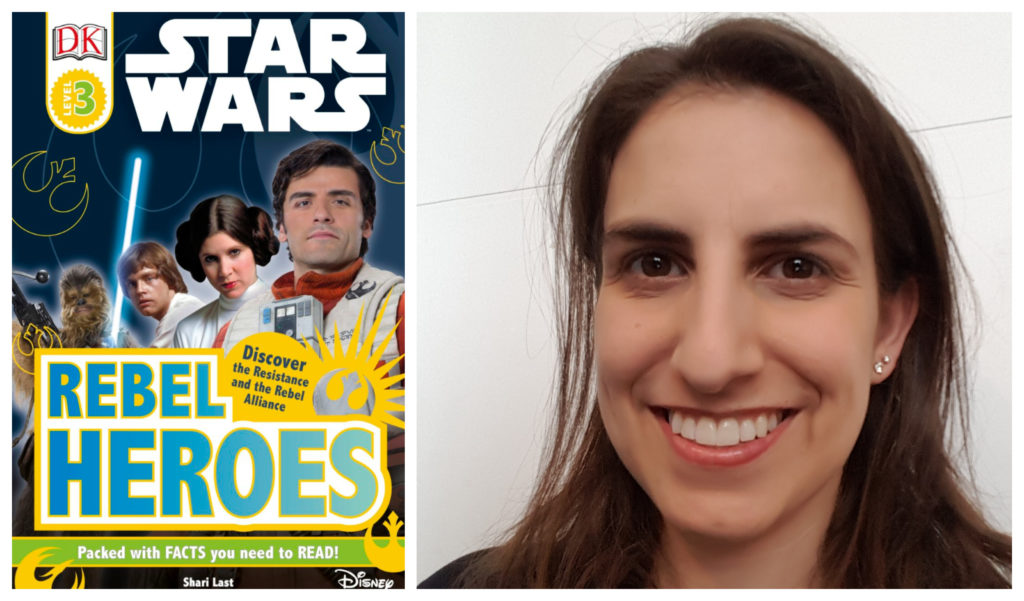
Shari Last is a Project Editor at DK. She has also written several books for DK including the young readers book Rebel Heroes. Shari answered a few questions via email for this interview with 365 Star Wars.
What was your introduction to Star Wars?
As a child, I was obsessed with Return of the Jedi. I hadn’t seen the first two films and I had absolutely no idea about the overall storyline, but I was captivated by Luke and Leia (and I loved the Ewoks and their little village, too!). I have memories of rewinding the battered old VHS tape and watching it over and over.
Who are some of your favorite Star Wars characters and have those favorites changed much over time?
Luke was always the hero of the story when I watched as a kid. He was always my favourite, closely followed by Leia who was so cool! As I got older I appreciated Han Solo’s character a lot more, how funny and unconventional he is. Interestingly, my current favourite character is Kylo Ren. I know, I know – he’s a villain! But I love how the character is played by Adam Driver, or maybe I’ve just gone over to the dark side…
How long have you been with DK and what was your path to getting your current position?
I’ve been at DK for almost 10 years now. After graduating with a degree in English and Film, I completed a graduate scheme at an art/design publishing house, which was slightly too arty and highbrow for me. After a couple of years editing at smaller publishers, I lucked out with a freelancing role at DK, working on books about Star Wars, LEGO, Marvel and DC – my perfect job! A few months later I was asked if I wanted a permanent role and I’ve been here ever since.
You’re currently a Project Editor at DK. Can you explain what a typical day (if you have them!) might look like?
Most days involve typical elements: writing or editing the books, emailing authors, working with designers to make each page of the book work perfectly, and speaking to our licensors. Then there’s usually something unexpected thrown in – working up a sales document, creating spreads for a new pitch or brainstorming new trends and ideas with our extremely creative team.
Every so often there’s a photoshoot. Most recently I went to the shoot for Star Wars Maker Lab. It was challenging to photograph our Star Wars crafts, but it was really fun adding “special effects” like smoke, glitter and snow. ILM eat your heart out!
There are plenty of meetings, too, because our books are such a collaborative effort between editorial and design. I love it when we lose ourselves in the meetings and, instead of discussing print schedules and cover finishes, we end up debating which Jedi has the best lightsaber technique or how, exactly, Darth Sidious’s face ended up looking like that. I also spend a small amount of time researching and factchecking my books by watching clips from Star Wars—it’s a perk of the job!

You were one of the writers and editors of the LEGO Star Wars Character Encyclopedia. Can you share some of the character spreads you wrote for the book and any challenges you faced with them?
This book was really fun to work on. Normally, our books are written inworld, as if the characters are real and we are telling the reader all about their personalities, skills, vehicles, etc. But with this book we wanted to do something different. We wanted to acknowledge that we were talking about LEGO – but not go completely outofworld. It was a hard balance to find, but we made a conscious effort to use the word “minifigure” a lot, and to talk about the minifigure’s torso printing, for example, as opposed to their uniform or armour.
You can see on the spread that we still talk about the characters as if they are real, but it’s as if we are imagining playing with the LEGO minifigures, rather than being in the same world as the movie characters. We thought this worked really well for a LEGO book because of how important play is to the LEGO brand. It also helped us differentiate this book from the Star Wars Character Encyclopedia.
There is such a wealth of information in this book that it’s fascinating for both children and adult LEGO fans. Children and newcomers to Star Wars will appreciate learning all about the amazing Star Wars characters, LEGO collectors will enjoy facts and figures about the sets and minifigures, and adult fans will discover curious LEGO trivia about various pieces!
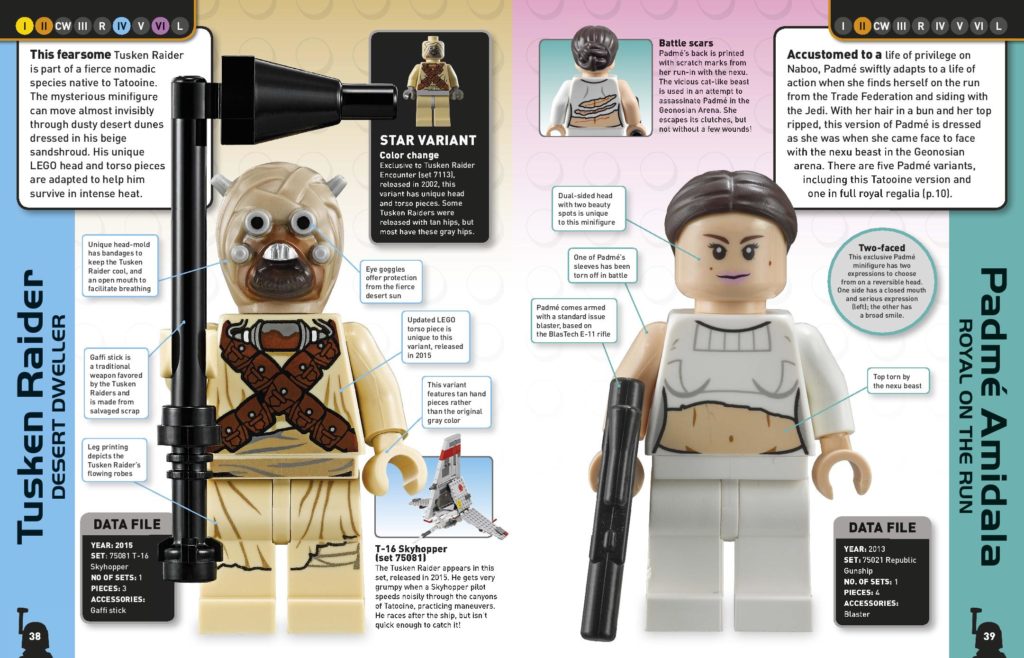
There’s so much detailed information about the LEGO pieces in this book (like how the Jawa cape was modified from the standard Jedi cape). Is all of this information cataloged at LEGO and then shared with DK authors for the purpose of these books, or if not, how does this information get into the hands of authors?
Our main resources were online LEGO reference sites. Would you believe there are websites out there where LEGO collectors and adult fans have catalogued and crossreferenced each LEGO piece?! It’s possible to search by set or minifigure, find a specific piece, say a hair piece, and then discover which other minifigures have the exact same hair! (Count Dooku and Palpatine, among others.) You can discover how many sets a minifigure comes in, which pieces are unique, and which characters have the same leg printing.
Searching for these factoids is time consuming, but when we found an interesting nugget of information (for example, that Rebel leader general Rieekan has the same LEGO face as Imperial Admiral Piett – and Professor Snape from LEGO Harry Potter) it was very exciting! The book is full of geeky little tidbits just like that.
Since you worked on both the 2011 and 2015 edition of the LEGO Encyclopedia I’m curious if one of your jobs was deciding which characters would need to get cut out of the new edition to make room for new characters. Who has the last say about which characters make the final cut DK, Lucasfilm, the author of the book?
Those sorts of decisions begin with the lead editor who plans out the synopsis, deciding which characters can be combined, which need to be updated or repaginated and which, if any, need to be cut. The synopsis is then reviewed by various people including the managing editor, publisher, Lucasfilm and LEGO. Once everyone is happy and any amendments have been taken in, we are good to go. Ultimately, we need approval from our licensors, in this case Lucasfilm and LEGO, so they have the final say.
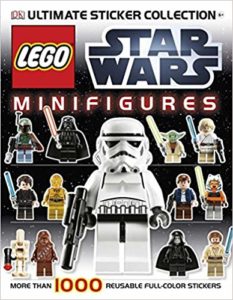
What’s it like switching hats from author to editor on the same project?
On larger books, such as the LEGO Star Wars Character Encyclopedia, there’s usually a team of editors and writers, so we edit each others’ work. On smaller books, for example sticker books, I sometimes write the text and then edit it. I find that I need a few days away from the project between writing and editing so I can look at the text with fresh eyes.
(Sometimes we don’t have this luxury if a schedule is tight!) However, even on a book with just one editor, we always make sure the text is read through by someone else on the team: a second set of eyes always picks up something!
For Rebel Heroes you were both the writer and the Project Editor. Were you the person who decided which characters, battles, and concepts would be the focus of the different spreads in the book? Can you walk me through some of the steps that go into creating one of these spreads? Is it true for these kinds of books the layout comes first and the text comes last?
Yes, as the editor I planned the synopsis for the book. This included choosing which heroes to include, in what order, and which vehicles, battles and other themes to include and where. Obviously, editors work together with our managing editor, who guides us and helps craft the perfect synopsis.
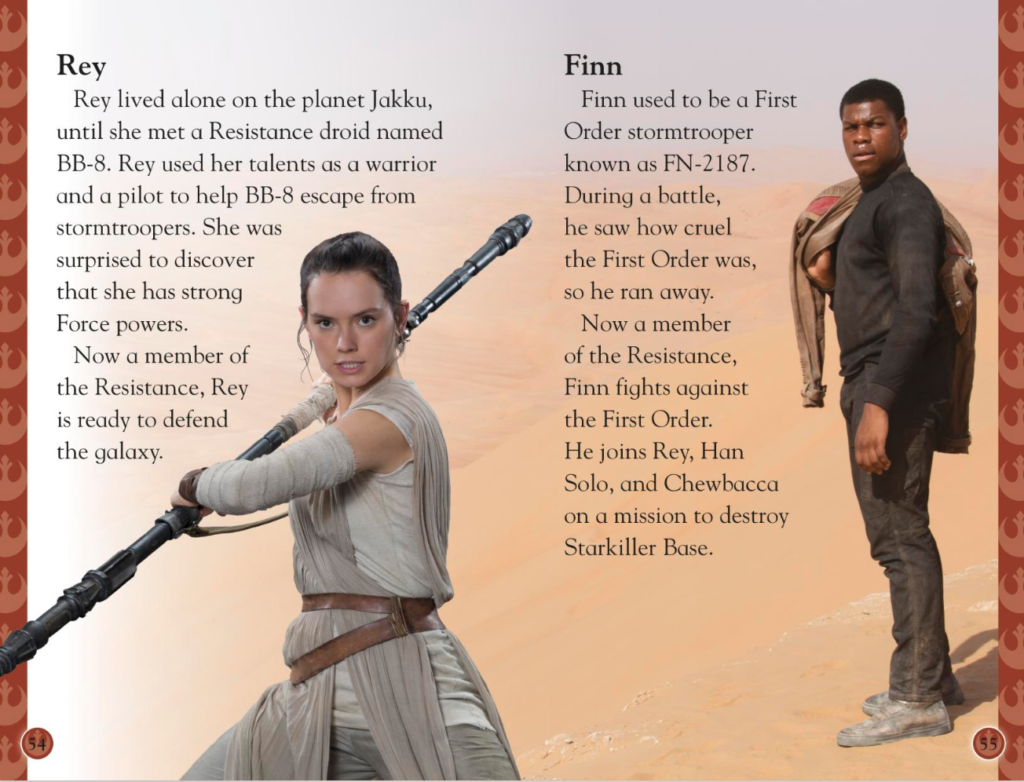
Once we’ve planned each spread, we hand over to the designers who work their magic. While they lay out the book, the author (me, in this case) can write the text. And then, once the layouts are done, I switch back to editor mode and place the live text into the layouts. Along the way, we have creative meetings where managers, designers and editors look at the layouts during their development and come up with ideas to improve them, or new ways to present information.
Maybe the editor needs to rework some text to better fit an image, perhaps we need to shuffle some spreads around to make the book read better, or maybe the designer can come up with a fun icon or text box to add value to each spread. It’s an intensive, painstaking collaborative project, but our desire to make the words and images work perfectly together is what makes our books so wonderful for young readers.
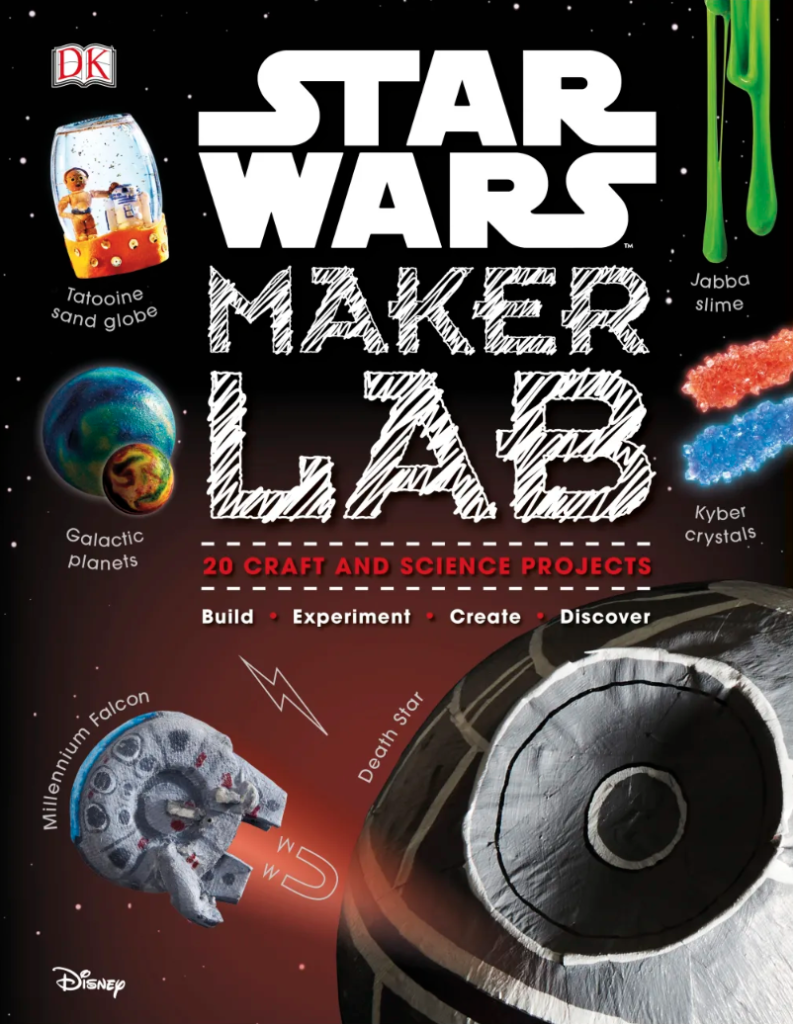
Do you have a favorite Star Wars book you have worked on at DK?
In general, I’ve enjoyed working on all the Star Wars books. Some have definitely been trickier than others, although I’m helped by the fact that I really do love Star Wars (and no, I’m not paid to say that). Recently, I enjoyed being a part of the Star Wars Maker Lab team. A crafting/science/Star Wars book was new to all of us and it was exciting trying to come up with science experiments and crafts for the book.
At one point I was trying to recreate a musical Star Wars instrument using rubber bands and a tissue box. Needless to say, it didn’t make it into the book, but when we saw the final crafts, we were all blown away.
Can you share any news about upcoming Star Wars books from DK or other projects from DK you are excited about?
In September, we are publishing Be More Leia and Be More Lando, which are humorous, novelty, selfhelp style books, but from a Star Wars perspective! Leia and Lando are both strong, popular characters, so it will be great to read their respective guides to life.




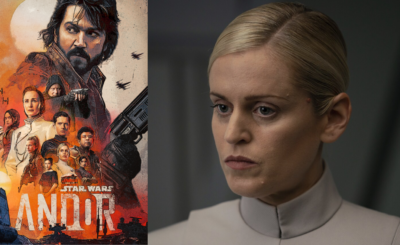



1 thought on “Day 384 – Shari Last”